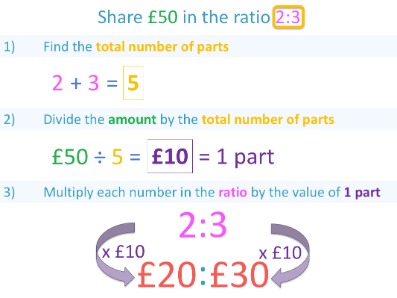Content
This will decrease the denominator of the equation, while keeping the numerator (debt) constant. In order to calculate the equity multiplier, you must know the valuation of the company, the amount of money you invested, and the percentage of ownership. It’s an easy way to see how valuable your equity investment is compared to others. Equity multiplier is a useful tool for assessing a company’s financial leverage.

A higher asset turnover ratio signals a company’s efficient use of converting assets into revenue. However, firms with a higher asset turnover generally experience lower profit margins as the trade off to quicker sales is decreased pricing power. Similarly, firms with higher profit margins, such as those in retail industries, exhibit lower asset turnover ratios, due to competitive pricing strategies.
Using the equity multiplier formula to assess your business debt, risk, and overall health
A common type of equity multiplier results in the company has a low debt type of financed assets. It is usually seen as a positive type as this company’s debt servicing expense is mainly lower. But one can also interpret a signal that the company cannot generate lenders’ loans on favorable terms. A high equity multiplier implies that a company mostly uses debt financing to purchase assets, while a low equity multiplier suggests it relies more on equity. Either way, the multiplier is relative- it’s only high or low when compared with a benchmark such as the industry standards or a company’s competitors.
- The debt ratio indicates the percentage of total assets that are financed using debt.
- The company’s asset financing structure is conservative, and therefore, creditors would be willing to advance debt to ABC Company.
- For companies to acquire assets and conduct business, they will need to either finance their activities by injecting their own equity, issuing debt, or any possible combination of the two.
- To find a company’s equity multiplier, divide its total assets by its total stockholders’ equity.
- It is a known factor that the total assets are the only equitation numerator.
- If a company has an equity multiplier of 2, this means that a company is equally financed by debt and stockholder equity.
There will be fewer funds available to creditors when the company liquidates. This means that a company has to generate more cash inflow specifically to remain in a healthy business. Step 4 Fourthly, once you arrived at the ratio, you need to compare the ratio with the industry standard. Equity multiplier does https://kelleysbookkeeping.com/ not take into account interest payments on debt, types of debt a company has, or types of equity a company has. By contrast, a lower multiplier means that the company has less reliance on debt (and reduced default risk). What is good in one industry or even a company may not necessarily be good in another.
Equity Multiplier Formula
If we assume that the interest rate defined on this debt is 6%. In this article, you will learn about the problems with the equity multiplier. The equity multiplier is an accounting concept that measures the leverage effect of a company’s liabilities on its equity. For example, say a company has $100 million of debt and $300 million of equity. So you can calculate the Equity ratio by just taking out the owner’s fund and dividing the owner’s fund by the assets company has purchased with the owner’s fund. Samsung had total assets of ₩426 trillion at the end of the 2021 financial year and stockholder equity of ₩296 trillion, giving it a multiplier of 1.4.
Equity multiplier is a financial ratio that measures the amount of the company’s assets that are financed by shareholders’ equity. An equity multiplier is a formula used to calculate a company’s financial How To Calculate The Debt Ratio Using The Equity Multiplier leverage, which is the debt a company uses to finance its assets. It can be calculated by looking at a company’s balance sheet and dividing the total assets by the total stockholder equity.
Disadvantage or Limitation of Equity Multiplier Formula
Apple is thus more susceptible to changing economic conditions or evolving industry standards than a utility or a traditional telecommunications firm. The values for the total assets and the shareholder’s equity are available on the balance sheet and can be calculated by anyone with access to the company’s annual financial reports. If a company’s equity multiplier is greater than the average for its industry and in relation to its peers, this indicates that the company is using more debt to finance its assets. Imagine that your total asset value is of $1,000,000, and the total equity is $900,000.
- Carbon Collective partners with financial and climate experts to ensure the accuracy of our content.
- Total assets are on a company’s balance sheet, while total equity is on a company’s balance sheet or in its shareholder’s equity section.
- Two-thirds of the company A’s assets are financed through debt, with the remainder financed through equity.
- Consider Apple’s (AAPL) balance sheet as we look at the close of this financial year 2020.
- In summary, to calculate your firm’s ROE, multiply Net Profit Margin times Return on Assets (ROA) times Financial Leverage.
For instance, if a company has an equity multiplier of 2x, the takeaway is that financing is split equally between equity and debt. On the other hand, a high equity multiplier is not always a sure sign of risk. High leverage can be part of an effective growth strategy, especially if the company is able to borrow more cheaply than its cost of equity. Assuming no other factors are changed, then higher financial leverage or, in other words, higher equity multiples will raise ROE.
Calculating Debt Ratio
Subtract the company’s total stockholders’ equity from its total assets to find its total liabilities. For example, subtract $1 million (Company X’s total stockholders’ equity) from $2 million (Company X’s total assets) to get $1 million in total liabilities for Company X. The company in our illustrative example has an equity multiplier of 2.0x, so the $1.35m assets on its balance sheet were funded equally between debt and equity, with each contributing $675k. Because their assets are generally financed by debt, companies with high equity multipliers may be at risk of default. The second component is Total Asset Turnover, which measures a company’s ability to convert assets into revenue.
- Higher equity multipliers typically signify that the company is utilizing a high percentage of debt in its capital structure to finance working capital needs and asset purchases.
- Having professional and specialize experience in field of Account, Finance, and Taxation.
- The equity multiplier is a financial leverage ratio that is used to measure what portion of a company’s assets are financed by equity instead of debt financing.
- The equity multiplier shows the degree to which a company’s assets are financed through the use of shareholder’s equity.
In essence, the equity multiplier ratio is an indicator revealing how much a company has purchased its total assets through stockholder’s equity. An equity multiplier of 1.11 indicates that Harlitz has very low debt levels. Specifically, a mere 10% of his assets are debt-funded and the remaining 90% is financed by investors. Creditors would view the company as too conservative, and the low ratio can have an unfavorable impact on the firm’s return on equity. This is because it is calculated by dividing total assets with total equity. Since both total assets and total equity are positive numbers, equity multiplier will always be a positive number.

